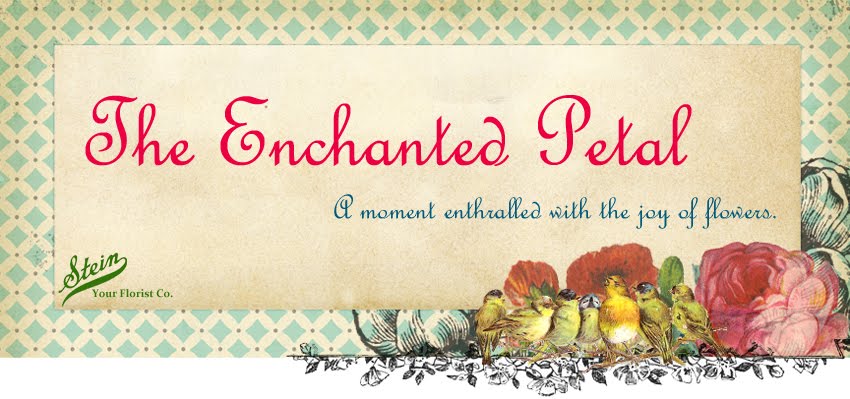 As part of our 125th Anniversary celebration
at Stein Your Florist Co. we are sharing a year of floral education, November
1, 2012 thru October 31, 2013. Each day we will post something new on our Facebook page to share
our knowledge of our favorite things, flowers and plants and we'll be updating
our blog every 5 days or so. No need for pencils and notebooks, just sharing
some simple lessons in floristry.
As part of our 125th Anniversary celebration
at Stein Your Florist Co. we are sharing a year of floral education, November
1, 2012 thru October 31, 2013. Each day we will post something new on our Facebook page to share
our knowledge of our favorite things, flowers and plants and we'll be updating
our blog every 5 days or so. No need for pencils and notebooks, just sharing
some simple lessons in floristry.
Day 176 - Hen
and chicks (also known as Hen-and-chickens, or Hen-and-biddies in the American
South) is a common name for a group of small succulent plants belonging to the
flowering plant family Crassulaceae, native to Europe and northern Africa. They
grow close to the ground with leaves formed around each other in a rosette, and
propagating by offsets. The "hen" is the main plant, and the
"chicks" are the offspring, which start as tiny buds on the main
plant and soon sprout their own roots, taking up residence close to the mother
plant.
Day 177 - Tropical foliages are widely available from Central and South America. They tend to be very long lasting. As with all tropicals these foliages should not be exposed to temperatures below 15 degrees celsius. Regular misting of tropical foliages helps to keep them fresh and last longer.
 Day 178 -
Alstroemerias are best known as cut flowers, where their rich colors and lovely
veining grace many a vase, where they'll last for as long as two weeks. But
they can also be grown in the garden, where they do best in light, well-drained
soil. They bloom freely through the summer and come in almost all shades of the
rainbow except true blue.
Day 178 -
Alstroemerias are best known as cut flowers, where their rich colors and lovely
veining grace many a vase, where they'll last for as long as two weeks. But
they can also be grown in the garden, where they do best in light, well-drained
soil. They bloom freely through the summer and come in almost all shades of the
rainbow except true blue.
Day 179 –
Hanging amaranthus, amaranthus caudatus, is a species of annual flowering
plant. It goes by common names such as love-lies-bleeding,
love-lies-a'bleeding, pendant amaranth, tassel flower, velvet flower, foxtail
amaranth, and quilete. It can grow anywhere from 3 to 8 feet in height, and
grows best in full sun. It can handle a variety of conditions, both humid and
arid. It is easily grown from seed. In most of its range, it is planted as a
summer annual. In temperate regions, plants can be started indoors in early
spring and transplanted outdoors after the last frost.

Day 180 - A
pseudanthium (Greek for "false flower") or flower head is a special
type of inflorescence, in which anything from a small cluster to hundreds or
sometimes thousands of flowers are grouped together to form a single
flower-like structure. Pseudanthia take various forms. The individual flowers
of a pseudanthium commonly are called florets. The real flowers (the florets)
are generally small and often greatly reduced, but the pseudanthium itself can
sometimes be quite large (as in the heads of some varieties of sunflower and
gerbera daisy.







